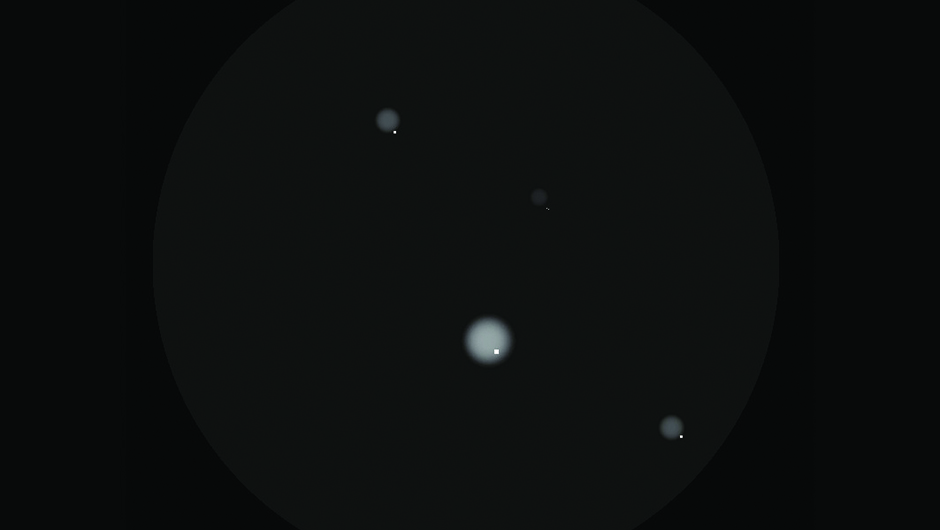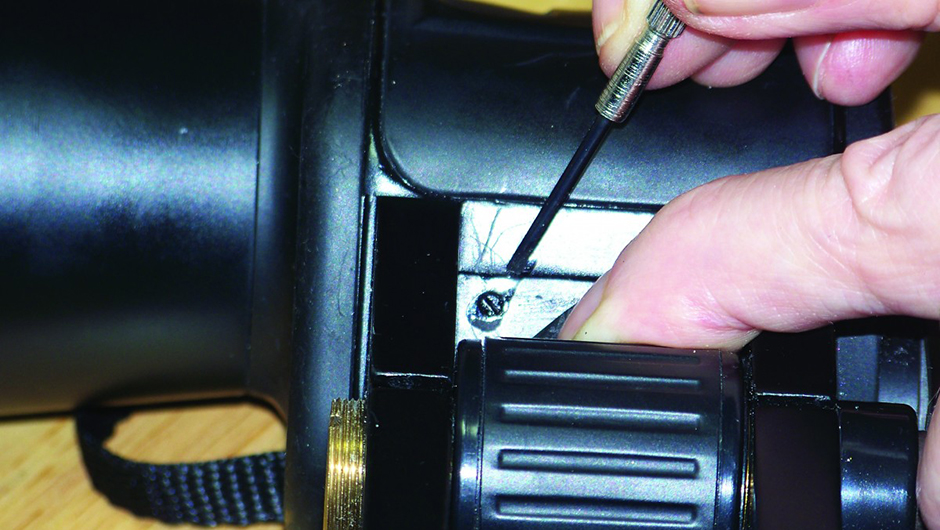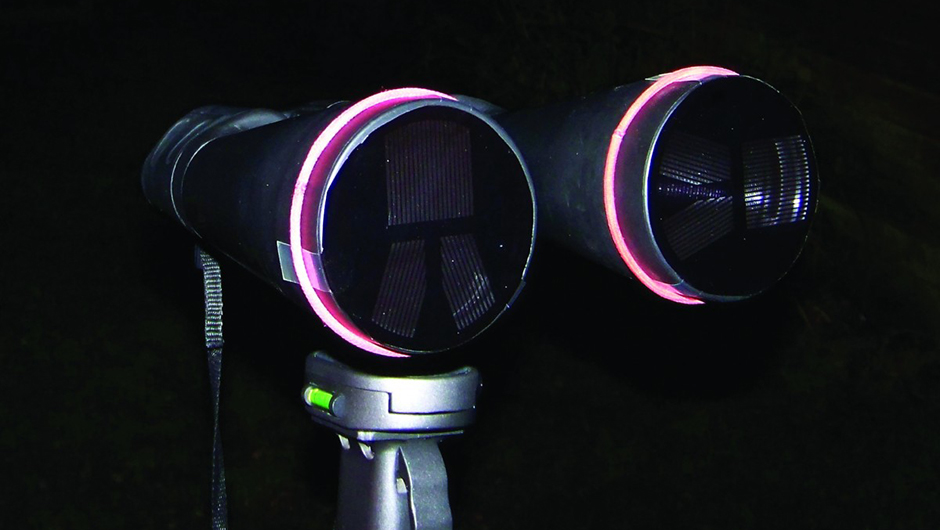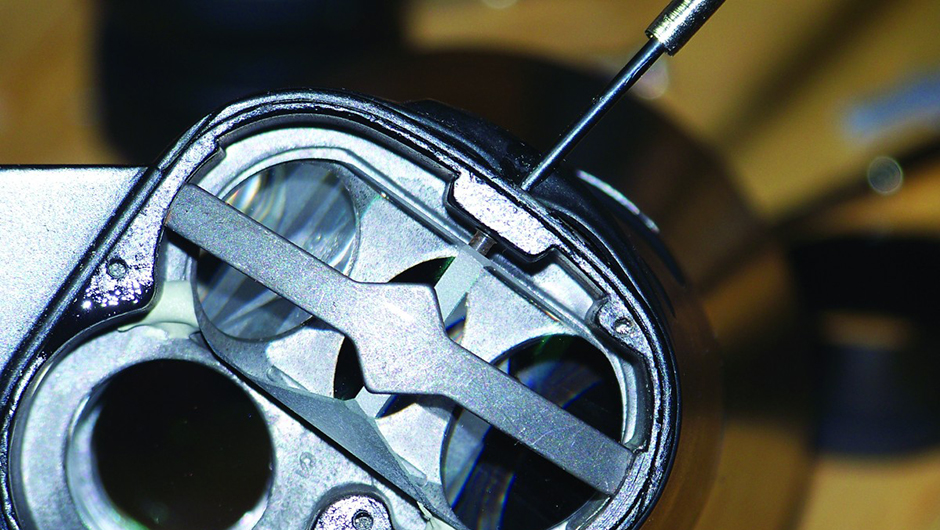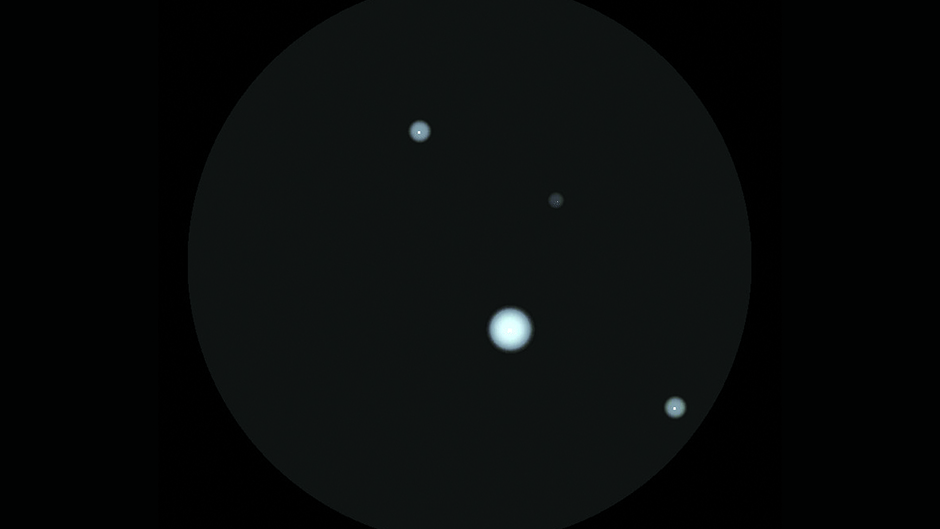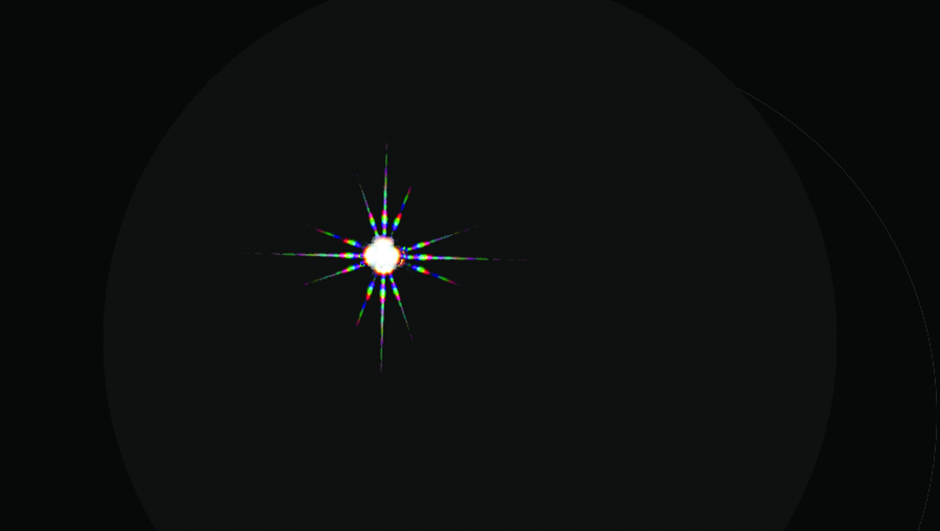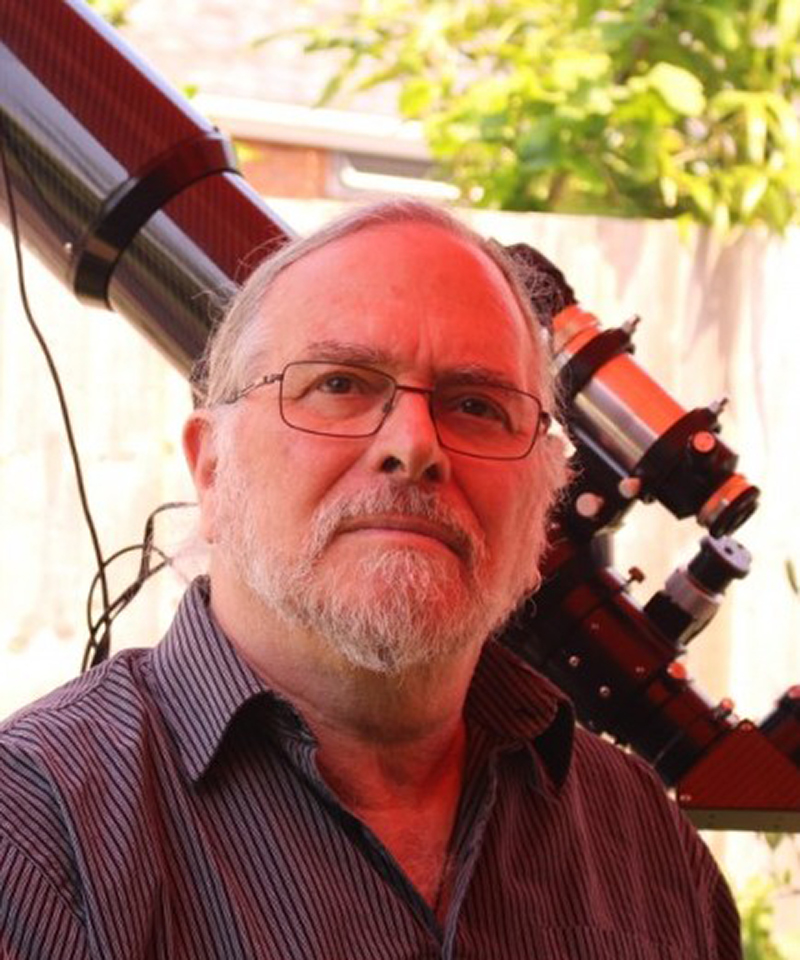It takes specialist equipment and a lot of skill to perform a full collimation of binoculars, so what we’ll do here is what’s known as a ‘conditional alignment’, where we align the optical tubes with each other in order to get a single image, but we won’t attempt to align them with the hinge as well.
As a result, they’ll only be in good alignment for the interpupillary distance at which you align them; this is the ‘condition’ in conditional alignment.
Tools and materials
Print outBahtinov masks on transparency film suitable for your printer. This removes the need to cut out the individual slots. Leave three tabs evenly spaced around each mask to tie down on to your binoculars.
Use elastic bands or sticky tape to secure the Bahtinov masks to your binoculars.
An L-bracket or hinge clamp is essential to hold your binoculars still while you collimate them.
Select a small flat-head screwdriver to fit the collimation screws.
Anaglyph glasses are a useful alternative to Bahtinov masks and can be used in daylight.
A head-torch is essential for hands-free illumination of the task.
The advent of inexpensive astronomical binoculars has opened this side of our hobby to tens of thousands of people who would otherwise have been priced out of it.
But with it have come some compromises, one of which is that low-cost binoculars can easily lose collimation.
As far as binoculars are concerned, collimation means that the images from the two optical tubes must merge within very tight tolerances.
The night sky is very demanding of optical systems, so a slight misalignment that you may not notice in daylight can become especially apparent under the stars.
If your binoculars are badly out of collimation they’ll give a double image which is, at best, very annoying.
However, if collimation is only slightly outside acceptable tolerances, your brain will attempt to compensate for it, putting strain on the muscles that move your eyes, which can lead to headaches or nausea.
If your binoculars arrive out of collimation or if they’re still under guarantee, you should return them to the vendor to be remedied, because the measures described here will immediately invalidate any warranty.
If the guarantee has expired, you may wish to have them collimated by a professional repairer, but for many inexpensive binoculars this will cost more than the price of replacing them.
In this case, you have nothing to lose by attempting the job yourself.
Aligning the prisms
The typical cause of Porro-prism binoculars losing collimation is being dropped or receiving a knock that shifts one of the prisms.
In the most common form of inexpensive binoculars, each prism is held in place with a spring clip that tensions it against a screw that tilts the prism.
This arrangement means the prisms are vulnerable to being dislodged by impacts, but it also means that you can usually correct the problem by adjusting the tilting screws.
First of all, thoroughly examine your binoculars to make sure that any miscollimation isn’t due to external physical damage, such as an objective tube being bent out of alignment.
Fixing this kind of defect is beyond the scope of this article.
Then you should test the binoculars under a night sky.
To do this, you have to overcome the ability of your eyes and brain to merge images that aren’t actually merged.
There are three ways to fool your brain into thinking that the separate images are of different objects, and each one offers an increasing level of complexity and precision.
The first and most simple method is to defocus one side of your binoculars.
The focused image from the other side should be central in the defocussed image.
The second method is to use different coloured filters, such as 3D anaglyph glasses (although coloured cellophane sweet wrappers will do in an emergency) so that the image from each side is a contrasting colour.
You can also use these during daylight to merge the images of, for example, a distant TV antenna.
The third and most precise method is to use Bahtinov masks, orientated at right angles to each other.
The simplest way to obtain these is to use a generator, such as http://astrojargon.net/MaskGenerator.aspx.
(Note: if you don’t know the focal length of your objective lens, assume it’s four times the aperture).
If you follow the step-by-step guide and get the collimation as precise as you can, you’ll give your binoculars a new lease of life and be able to enjoy many hours of strain-free observing.
